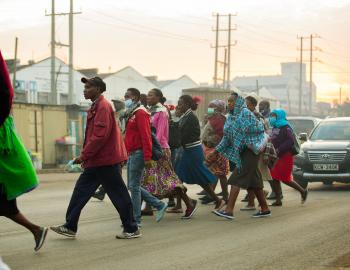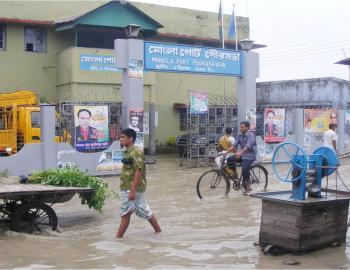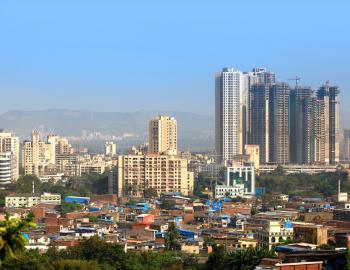REPORT: Strengthening disaster risk management in India: A review of five state disaster management plans
REPORT: Strengthening disaster risk management in India: A review of five state disaster management plans
India has suffered from many disasters in its recent history, both natural and climate-related, and these continue to cause devastation. In November 2015, floods in the southern city of Chennai, Tamil Nadu, killed over 370 people and damaged crops worth US$190 m. And in May 2016, at the time of writing this report, record temperatures of 51°C hit Phalodi, Rajasthan, during a heat wave that affected much of northern India. In the face of these diverse and repeated hazards, Indian authorities, from the national to the state level, have taken a series of actions to improve their management of disasters. One of the foremost policies enacted has been the development of state disaster management plans (known as SDMPs). All states in the country are required to produce these documents, which outline the preparations, risk-reduction actions and responses needed to reduce and cope with the threats specific to their region. But how effective are these plans in ensuring states are better able to prepare for, and respond to, disasters?
This research analyses in detail the SDMPs from five very different states (in terms of climate, geography, size and location): Assam, Bihar, Gujarat, Odisha and Uttarakhand. A workshop and interviews with key informants from these states were also held. Through this process, five SDMPs were reviewed and a range of questions were considered:
- How well do they address all stages of the disaster management cycle: prevention, risk reduction and preparedness, as well as relief and response?
- Is there sufficient financing for reducing disaster risks?
- How do these states assess vulnerability?
- Is disaster risk reduction being mainstreamed across different departments in each state?
- Do the SDMPs promote gender and social inclusivity?
- Do they align with the Sendai Framework for Disaster Risk Reduction 2015–2030, the first major agreement of the post-2015 development agenda to reduce disaster risk?
Specific conclusions for each of these issues, as well as recommendations for action, are included in each chapter; these will be of particular interest to the states reviewed, but also to other states in India, and more widely. Overall, this research finds that while the SDMPs provide a good basis for coordinating disaster risk reduction and management at the state level, they would be strengthened if they:
- clarify the division of responsibility among the nodal institutions charged with managing disaster risk
- consider all stages of the disaster management cycle equally, as opposed to their current emphasis on response and relief after a disaster
- consider new and innovative models for financing risk management
- mainstream disaster risk reduction across all the relevant sectors and departments at the state level
- adequately incorporate the socioeconomic vulnerability of different groups, such as women and the very poorest people, into vulnerability assessments
- consider the additional risks that climate change will bring to vulnerable populations
- produce baseline assessments and data to track future progress in disaster risk reduction
- align more closely with the Sendai Framework.
Image credit: Asian Development Bank



